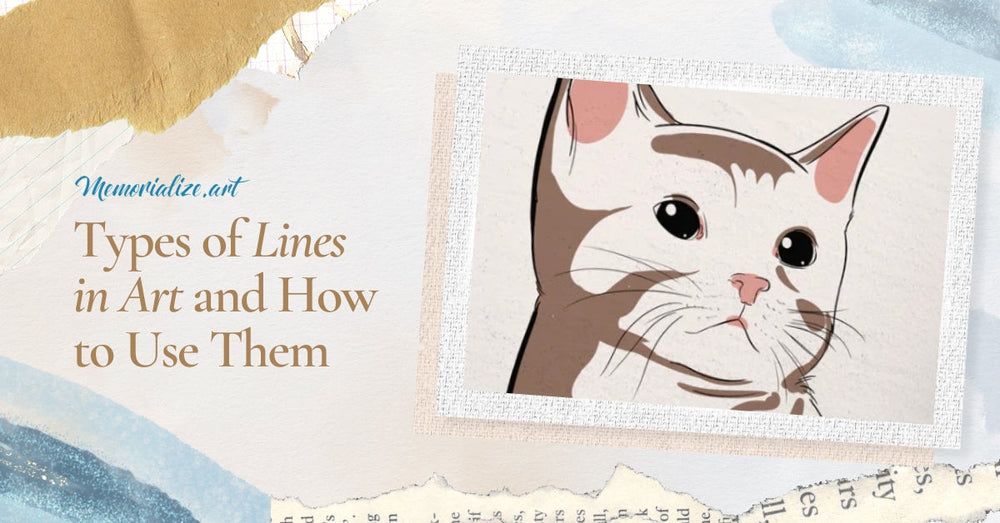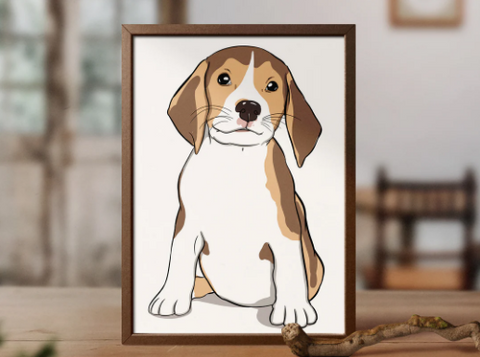6 Types of Lines in Art and How to Use Them

Lines can shape the visual story and make people feel different things. In the world of art, arrangements of lines are more than just strokes on a painting or marks on a page. Understanding the different types of lines in art, their fundamental elements, and how to use them well can help an artist get their message across and keep the viewer's attention.

Lines in Art
Lines are one of the most basic elements of art. They may be created using pencils, pens, paintbrushes, and digital mediums. These are the basic building blocks of many pieces of art, created by a point in motion and hold significant importance in art styles.
These play a vital role in the overall composition of an artwork. They lead the viewer's eye, make tracks for the eye to follow, and give a sense of perspective. It can change how we see space, depth, and visual elements by how they go, how deep they are, and where they are.
Types of Lines in Art

The types of lines in the art can convey a different mood or feeling, from calm and balanced to lively and chaotic. By learning the types of lines used in art, artists can add them to their drawing tools and give their works interesting visual stories.
Diagonal Lines
Diagonal lines possess an inherent sense of movement, imbuing compositions with a vibrant and engaging quality through their slanted trajectory. These straight lines can evoke a range of emotions, from a thrilling sense of motion and tension to a feeling of instability or unease in a piece of artwork.
Vertical Lines
Vertical lines in art have an upright posture and commanding presence in a piece of art. It can be found in tall buildings, powerful trees, or straight-up figures. It gives art a sense of height and stability.
Horizontal Lines
Horizontal lines in art stretch parallel to the horizon, creating a harmonious and peaceful atmosphere within the subject matter. They are often employed to represent landscapes, vast expanses of water, or the horizon itself.
Curved Lines
Curved lines have a natural ease and flexibility that can evoke an illusion of movement. Whether subtle or pronounced, curved lines can shape the contours of line art, create organic forms, or compose dynamic compositions.
Cross - Hatching
Cross-hatching lines represent an intricate technique that adds depth, texture, and dimension to a composition. This line variety in art involves layering parallel lines in one direction, then adding another set of parallel lines that cross them at an angle.
Contour Lines
Contour lines are one of the most important ways to show the shape, form, and structure of a subject matter. Artists may employ contour lines to convey volume, depth, and perspective. These gesture lines can provide a sense of realism or can be manipulated to create stylized or abstract line drawings.
Understanding The Properties of Lines
The properties of lines are crucial for artists, as it unveils the expressive potential hidden within these art elements. From the bold and assertive strokes of a thick line to the delicate and subtle whispers of soft lines, each variation holds its own significance and emotional qualities, like in a family pencil drawing or a graduation pencil drawing.
Texture
Lines can possess various textures, ranging from smooth and fluid to rough and jagged. The roughness or sensual softness of lines in art adds a sense of touch and visual interest to a piece, making it more than just a two-dimensional surface on white paper.
Depth
In all types of lines in art, artists can give the impression of depth and volume by making lines thicker or spacing between lines. Lines get thinner and closer together as they retreat, implying decreasing size. This technique, known as linear perspective, enables artists to create realistic representations of depth and space on a flat surface.
Length
Long lines may guide the viewer's eye and create rhythm and flow. Shorter lines help highlight details in the artwork. Line length may significantly change the visual effect of artwork, whether it is stretched across a canvas or fragmented segments.
Different Functions of Lines

Lines can set limits and different shapes and give an artwork structure. They can show roughness, making the surfaces and feel of things come to mind. Understanding how additional lines work is essential if you want your art to be as creative as possible.
Dimensional Forms
Shading and hatching methods and lines can make a drawing look more three-dimensional. Artists can show how light plays on different surfaces by using crosshatching or similar lines to create areas of light and shade. This gives the forms more depth and texture.
Sense of Movements
Line thickness, length, and density enhance speed and intensity. Thicker lines suggest quick movement or highlight an artwork's essential areas. Short strokes represent fast activities or dynamic motions. Thin lines indicate delicacy or gradual, subtle movement.
Evoke Emotion
Thick, bold lines show assertiveness, confidence, and boldness. Wavy lines suggest beauty, elegance, and harmony. Sharp, zigzag lines and angular forms create tension and unrest.
Final Words
Understanding the six types of lines in art and how to use them gives artists a lot of ways to express themselves and connect with their audience on a deeper level. Lines are powerful art tools because they can be used in many different ways, such as to define shapes, guide movement, add depth, evoke feelings, create structure, or add texture.
Explore The Many Uses of Lines With Memorialize Art
Memorialize Art creates artworks that explore many applications of lines within their artworks. Whether looking for a pencil drawing, watercolor painting, oil painting, or acrylic painting, its lines can evoke the emotions you want to convey.










